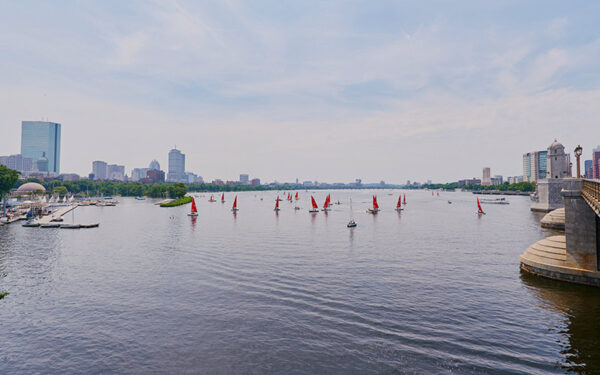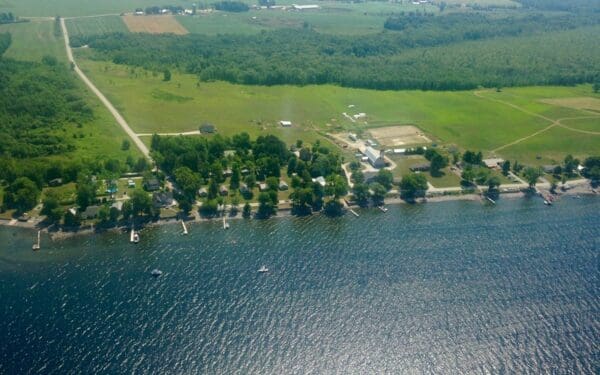Dirty runoff flows to from more than 30 surrounding communities into the Charles River, leading to toxic algae outbreaks. Photo: Leatherndevil via CC3.0
The next time it rains, take a close look at puddles in a parking lot. You’ll likely see an unsettling rainbow shimmer of oil. That oil doesn’t stay put in those puddles. Instead, the rain pushes it over the asphalt and into the nearest body of water, gathering other pollutants as it goes.
The Charles is where dirty runoff flows from more than 30 Massachusetts communities, including Cambridge and Boston. And once that polluted water reaches the Charles, something much more alarming than a rainbow shimmer forms: toxic blue-green algae.
Blue-green algae, or cyanobacteria, destroys animal habitats, makes people and pets sick, and puts our favorite activities like boating and kayaking the Charles at risk. Because of heavy rainfall and the increased stormwater pollution it brings, swim events planned in the river this Saturday, June 15, were postponed. The most recent water quality report card for the Charles dropped from an A- to a B in part because of a rainy 2018.
We can’t keep pumping our rivers full of polluted stormwater. That’s why, to keep the Charles clean, CLF and the Charles River Watershed Association are pushing the Environmental Protection Agency (EPA) for better protections for this iconic river with a new petition filed in May.
Toxic Algae Harms Plants, Animals, and You
What makes toxic blue-green algae such a threat? For starters, the layer of algae that forms on the water surface becomes a barrier, preventing sunlight and oxygen from reaching the aquatic plants and animals that need it. Everything below the surface of the Charles is in danger when cyanobacteria spreads.
Above the surface, things aren’t much better. Blue-green algae also wreaks havoc on human health. Its effects range from minor – headaches, vomiting, and nausea – to major, including pneumonia, incoherent speech, and respiratory paralysis. Emerging research also shows a link between exposure to toxins produced by blue-green algae and neurodegenerative diseases like Alzheimer’s and Parkinson’s.
Since outbreaks usually occur in warm months, they also interrupt favorite summer activities. Harbors and beaches are forced to close and recreational activities are put on hold because it’s not safe to be on, in, or near the water. This isn’t the only year that boat races and public swim events on the Charles have been cancelled due to blue-green algae outbreaks.
What’s more, with climate change making summers getting hotter and rainfall more intense, blue-green algae outbreaks will only get worse if we don’t take action now.
Keeping the Charles Safe
We can put an end to the harm caused by blue-green algae outbreaks by requiring the biggest contributors to the problem to control their stormwater pollution.
Stormwater runoff from commercial and industrial properties with lots of paved surfaces, like big box stores, strip malls, private universities, and major apartment complexes, is not currently regulated by EPA. However, these properties contribute a disproportionate amount of polluted runoff to the Charles. Due to a quirk of the Clean Water Act, EPA must act to formally bring these types of polluters into a regulatory program.
Even though EPA has the authority to do this – called Residual Designation Authority (or RDA) – they haven’t. And that’s a problem. That’s why CLF and our partners at Charles River Watershed Association are calling on the federal agency to take the steps necessary under the Clean Water Act to control stormwater pollution from major landowners with large amounts of paved surface and buildings.
This is not without precedent. In 2008, CLF asked EPA to regulate polluters in Maine’s Long Creek watershed and it complied. Since then, local businesses have partnered to limit their stormwater pollution and the once-dying Long Creek is slowly recovering.
It’s time for polluters to be held responsible for the harm they’re causing the Charles so we can all enjoy the river for years to come.



